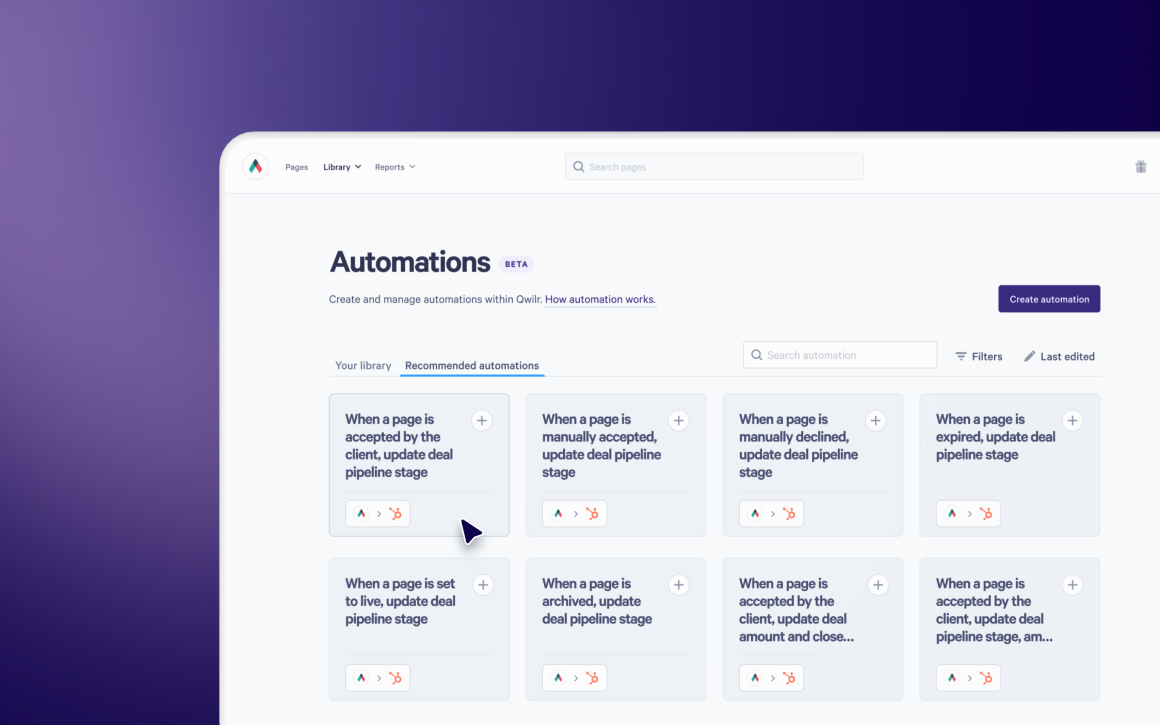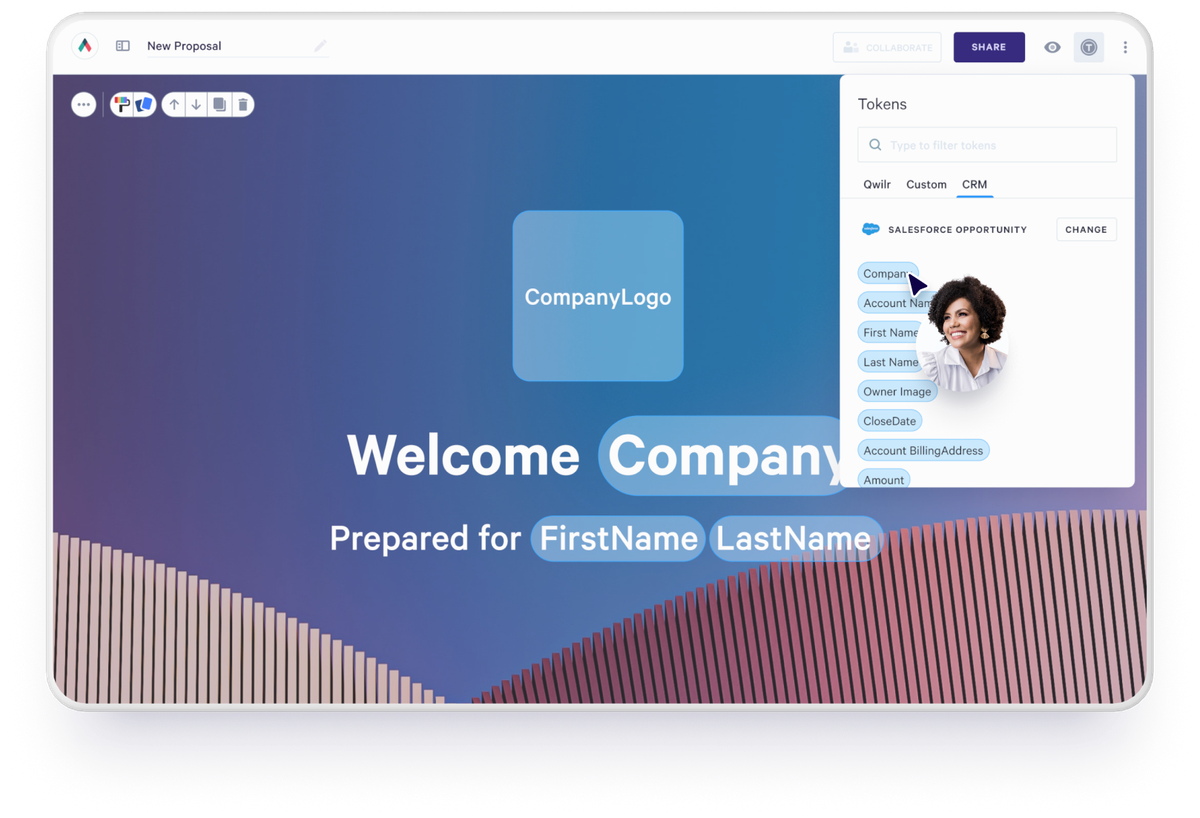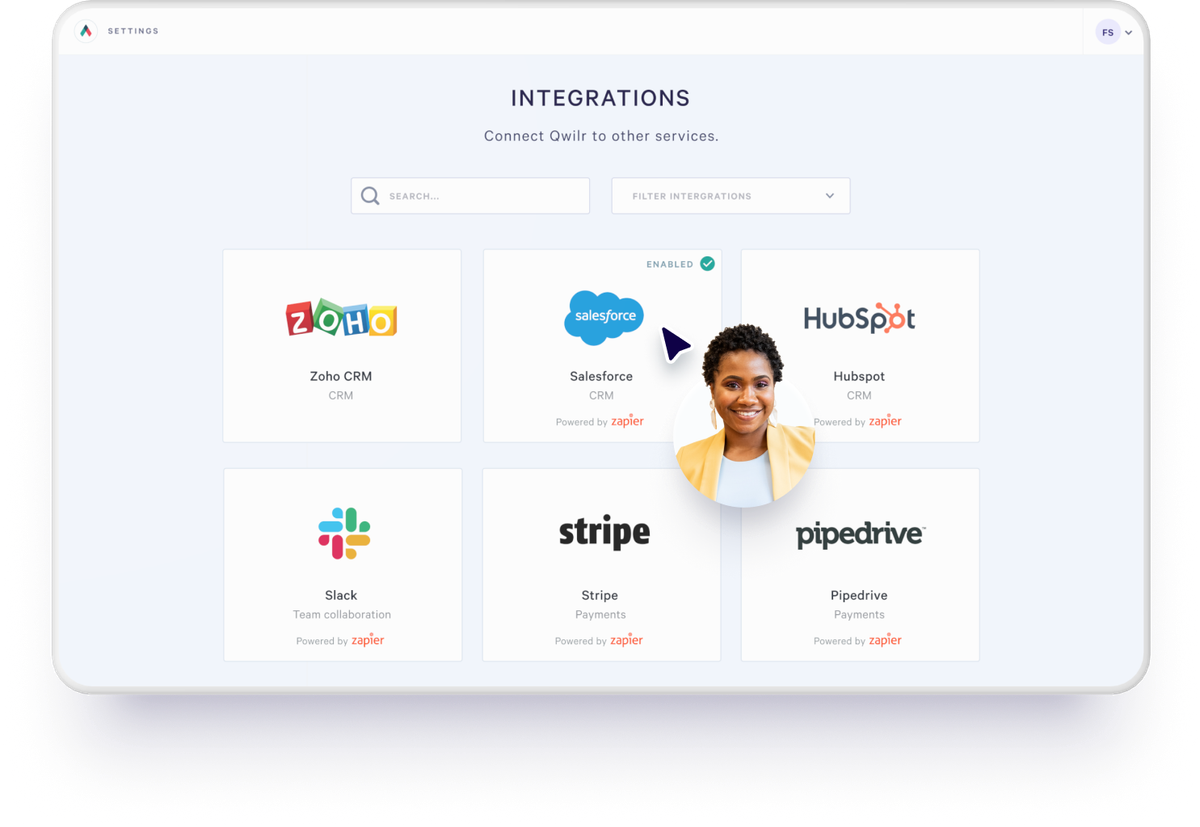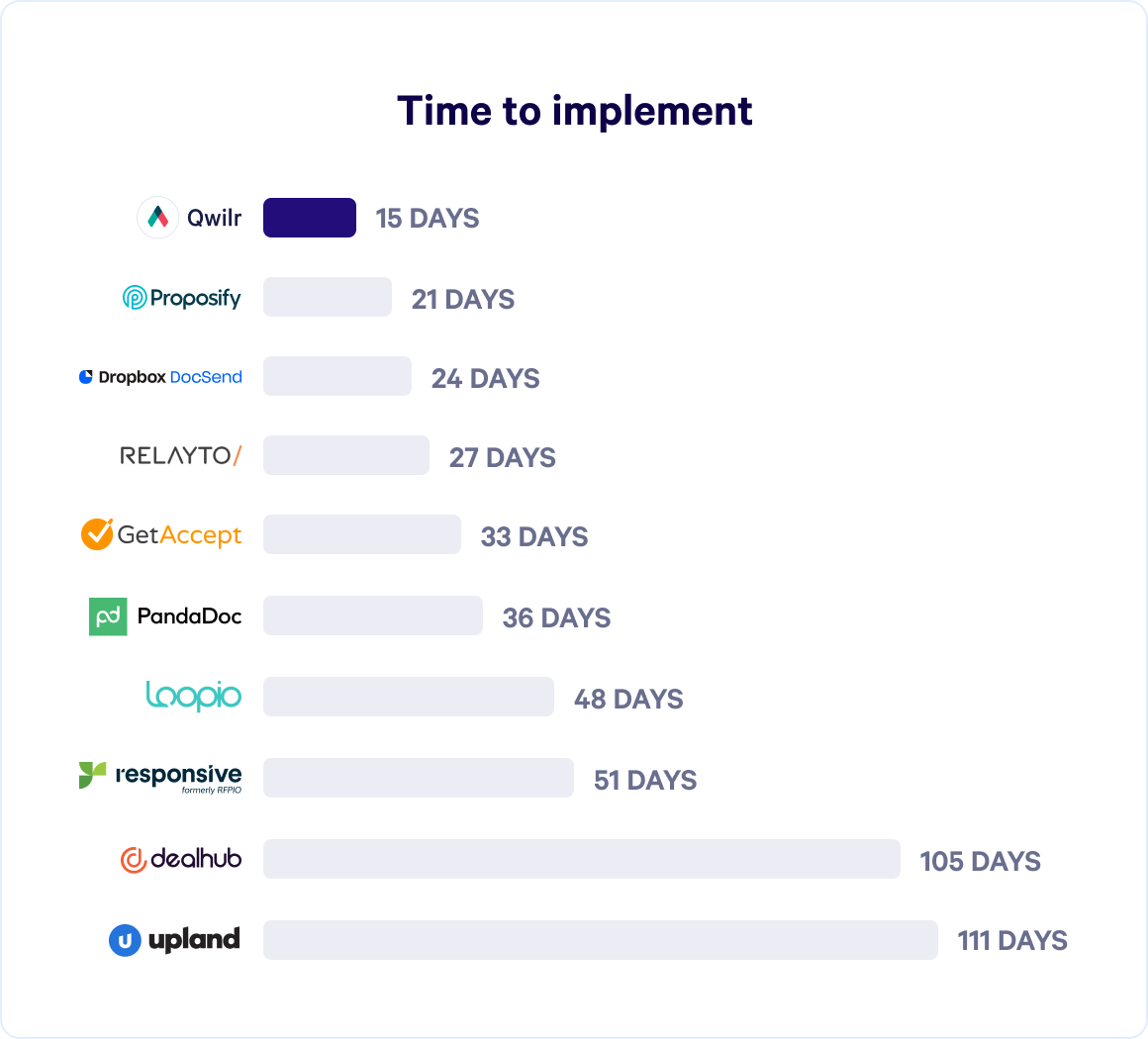Reduce manual work with proposal automation
Connect your CRM and create personalized proposals in minutes. Plus, trigger complex workflows and automatic CRM updates.







Run a repeatable, hands-off proposal process
Update CRM deals automatically
Move a deal to closed lost, update deal amounts, close dates, sync data and trigger workflows.
Automate content creation
Create templates and asset libraries that can be used to automatically generate sales materials in one-click.
Make personalization automated
Create fields that pull in company names, buyer details, pricing and more, directly from your CRM.
Automate the creation of proposals
With Qwilr, sales reps can generate proposals, pitch decks and more – directly from their CRM – within minutes of speaking to a buyer.

Automatically personalize your collateral
Qwilr can automatically pull in data from your CRM, dynamically personalizing your collateral with minimal effort.

Reduce manual work
With Qwilr’s advanced automations, you can automatically trigger CRM updates and complex workflows with Salesforce, Hubspot and Slack.

Keep everything error-free
Manual work leads to human error. With Qwilr’s automations, you can say goodbye to costly, embarrassing mistakes.

Connect your tech stack
Qwilr intergreates with all the leading CRM, sales and accounting software – like Hubspot, Salesfoce, Zoho, Pipedrive, Quickbooks and Slack.

Fastest proposal platform to implement
We compared the top 10 proposal software solutions on G2 so that you didn’t have to.
500+ 5-star G2 reviews

Why choose Qwilr?
The most comprehensive automated proposal system available
✅ Simple CRM setup
Effortlessly connect your CRM and be ready to go in a matter of minutes.
✅ Embedded in CRMs
A “Create Qwilr page” embeds in your CRM interface for easy access. Automatically create personalized pages using CRM data.
✅ Error-free quotes
No need to manually update pricing information. Let Qwilr pull in product line items with descriptions, quantities and more.
✅ Automate manual work
With HubSpot and Salesforce, you can connect what’s happening with Qwilr with what’s happening in your CRM – allowing for automatic updates and complex workflow.
✅ Automate visual content
Automatically embed images, videos, Google Maps and more.
✅ High-volume document generation
Generating a ton of documents? Connect to our API to generate 1000s of documents.
Loved by 4,000+ customers
What people are saying about Qwilr on G2:
Completely transformed my sales and proposal process!
“I love how easy it is to create an interactive, immersive, and fast-loading proposal page that is geared and aimed at maximising conversions.”

Transformed our quotations!
“I love how visually appealing Qwilr is in regards to the proposals we send our clients. We've had really positive feedback, even from people very high up at Apple.”

Proposal generation that's easy and beautiful
“Consistent appearance of the documents we create with Qwilr means that our proposals always look good and feel like us. The extensive library functions make it possible to reuse content easily and save time.”

Favorite Sales Tool!
“There is so much that I can do with Qwilr. We've been able to build several sales templates and then depending on the needs of our clients, choose the right template which means that we can speed up our sales process.”

Game Changer for Our Business
“We're solving the problem of dead quotes that lose momentum with Qwilr. We leverage the ability to see times quotes have been viewed quite a bit.”

Qwilr has changed the way we sell.
“Qwilr pages are beautiful & simple, and they set us apart from the competition. They are much easier to edit than other proposal services out there — meaning we can send more quotes in a shorter period of time.”
